Good Guild work on the ground
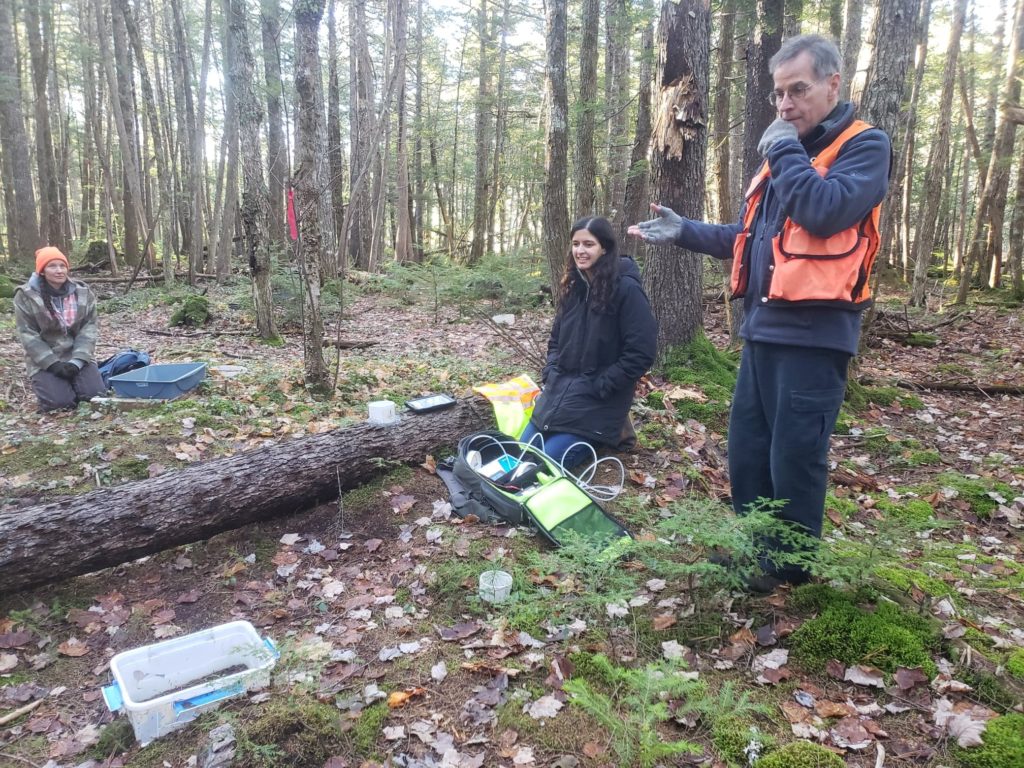
Shawn Fraver, UMaine PI, and Zoe Read, UMaine grad student, demonstrate the collection of carbon dioxide log flux measurements at the Howland Forest in Maine during a FCCI field tour.
Written by Zander Evans and Colleen Robinson
By now Guild members have received our Annual Review, which highlights our work across the country (if you haven’t received it, nor opted for paperless, you may need to renew your membership!). While the Annual Review covers a wide range of Guild programs and positive impacts, there is more that we couldn’t fit in there!
The Guild has been working to understand what climate change adaptation looks like in the woods. This included events like the Climate Change Science Field tour in Maine’s Rangeley Lakes region. The multiyear project brings partners including University of Maine and Maine TREE Foundation together to discuss scope & scale of climate issues, active management strategies, wildlife/biohabitat concerns, and unique adaptation strategies at different field sites. Similar conversations are happening in Oregon, as demonstrated by a recent webinar Climate-Smarter Forestry in Oregon; Accelerating the Transition.
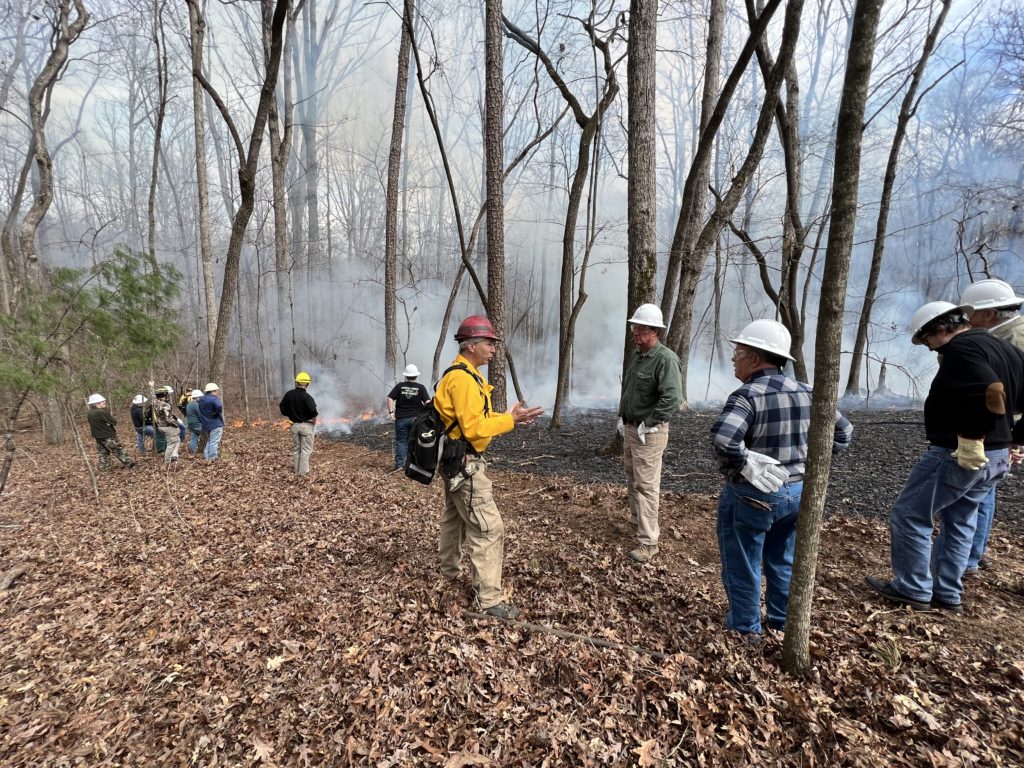
Learn and Burn event in Georgia
In both the Southeast and Pacific West, the Guild is engaged in efforts to mitigate potential risks for the Forest Stewardship Council’s controlled wood program. For the past three years, the Guild has helped FSC-certified companies meet their education and outreach goals on topics from forest conversion to species of concern. Guild staff are meeting this month in Portland, OR and Asheville, NC on the future of the program.
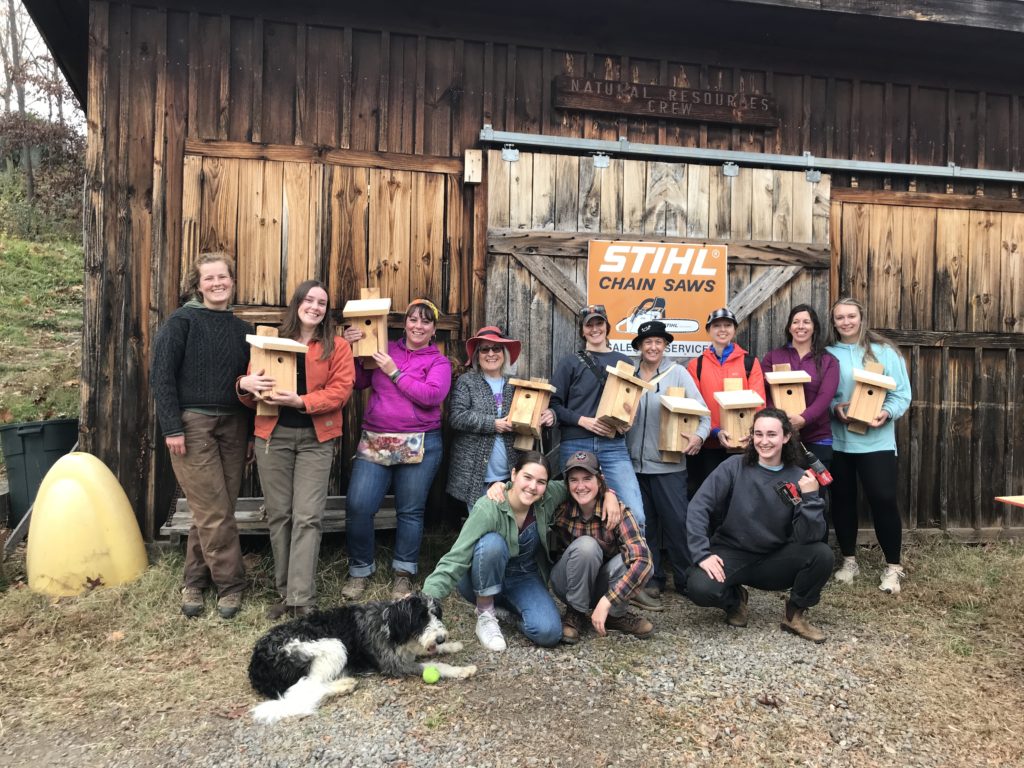
ForestHer NC group
Across the country, the Guild has been helping engage women landowners and recognize the key role women play as stewards. The Women Owning Woodlands virtual conference was held in March and brought together the expertise of over 20 female forestry and natural resource professionals from diverse geographies of the U.S. The full conference program, including speaker bios, can be viewed online. Later in October, Guild members and staff participated in the Women’s Forest Congress. These big events build on day-to-day work. The Guild’s Dakota Wagner chairs the executive board for ForestHer North Carolina, which seeks to empower women land stewards to take conservation action.
The Guild recognizes the need for diverse voices, experiences, and expertise to accomplish the best forest stewardship. The Seeing the Forest for the Queers (SFQ) group is building community and connection among LGBTQIA+ professionals and students in forestry and natural resources. We’ve hosted four community sessions so far, with a panel discussion coming in February, 2023 that welcomes everyone to join and learn more. The Northwest Innovative Forestry Summit this autumn at the University of Washington’s Pack Forest focused on connecting and building a community of forestry professionals, students, and stewards. Sessions focused on outside-the-box technical forestry management efforts and created a space for challenging discussions with BIPOC forestry leaders on the lack of diversity and barriers to the field of forestry, and how to start changing this reality.
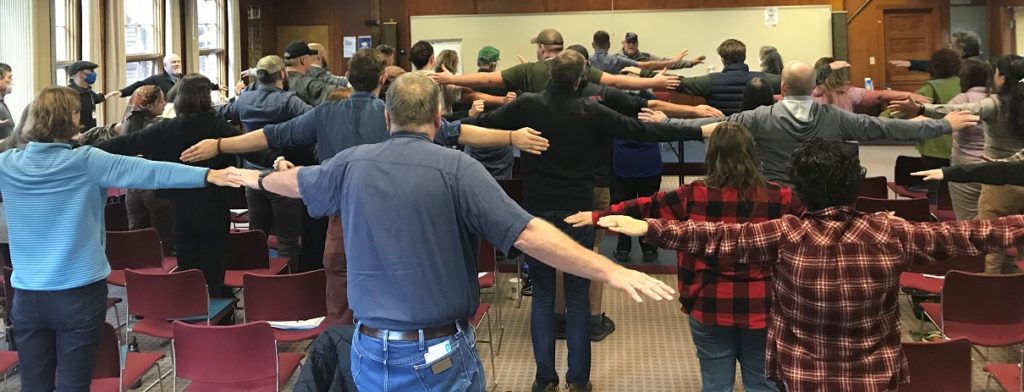
Don Motanic, at the Northwest Innovative Forestry Summit, offers attendees an embodied way to understand the spans of time that Indigenous people and white Europeans have engaged in stewardship on this continent.
During August in the Lake States, the Guild partnered with the Driftless Area Land Conservancy to host a Guild Gathering at a brand new, 300+ acre land trust property outside of Madison, Wisconsin. This event kicked off ongoing efforts to better connect Guild members with land trusts across the country. We can learn a lot from each other to better serve landowners, land managers, and others looking for funding and climate-resilient solutions to restoration and stewardship of land in perpetuity and will be asking you to engage your expertise in the future discussions!
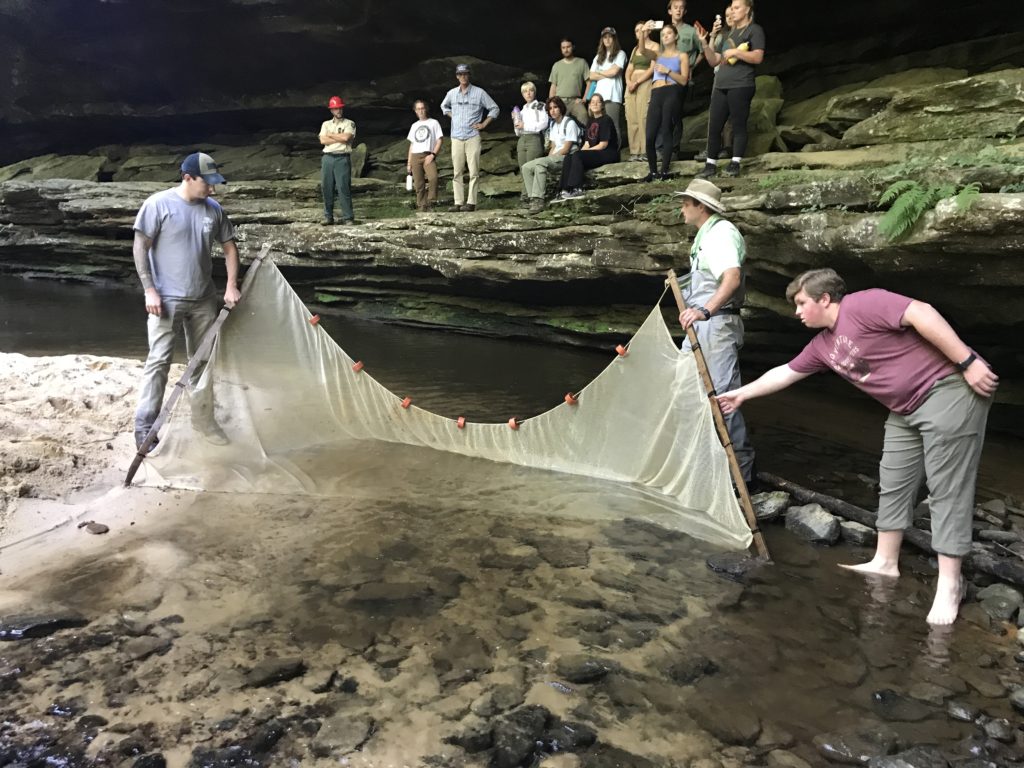
University of Alabama student event at Bankhead National Forest
We are also actively engaged with the next generation of forest stewards. In the Southwest, our Forest Stewards Youth Corps received a total of 1,137 education hours and completed 3,758 hours on projects such as riparian restoration, rare species monitoring, recreation maintenance, noxious species removal, and range monitoring. The Guild’s mentorship program brings motivated, enthusiastic young adults from our Forest Stewards Youth Corps into the office to give them a boost launching their careers. Our first mentee has already secured a job with Jemez Pueblo Natural Resources Department. In the Southeast, two students completed internships with the US Fish and Wildlife Service in the fifth year of our program on the Carolina Sandhills National Wildlife Refuge. Guild members and staff connected with students at events with Oregon State University and University of Alabama this year.
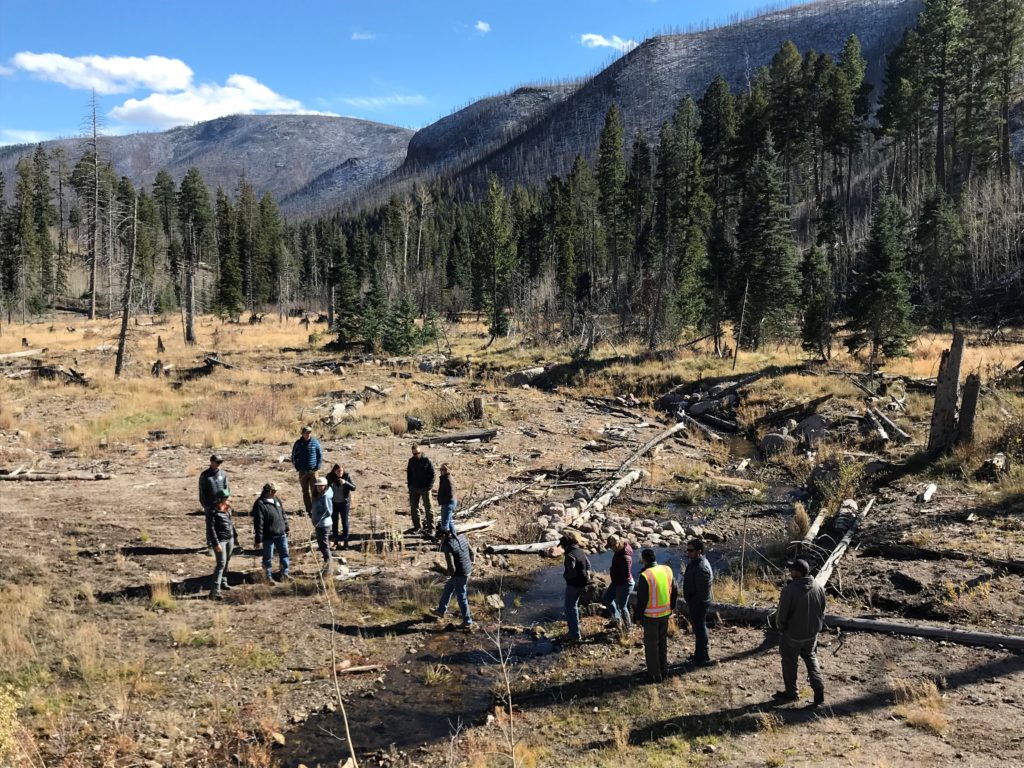
Fire is another topic that engages the Guild across the country. In the Northeast, staff recently completed a Community Wildfire Protection Plan for Massabesic Region, drawing on experience with similar plans in New Mexico. The Guild supported prescribed burns in Minnesota’s Cloquet forest (check out this cool video!) and in western New Mexico with the State Land Office. Along with many research and management partners, the Guild helps with fire science knowledge exchanges in both the Northeast and Southwest and many learn and burn workshops in the Southeast. In response to recent uncharacteristic wildfires and their negative ecological consequences, the Guild helped plant 10,000 trees in New Mexico and is encouraging post-fire resilience planning through webinars and discussion.
2022 has been a busy year, and we’re looking forward to even more learning and action in 2023 – thank you for being a part of it!
